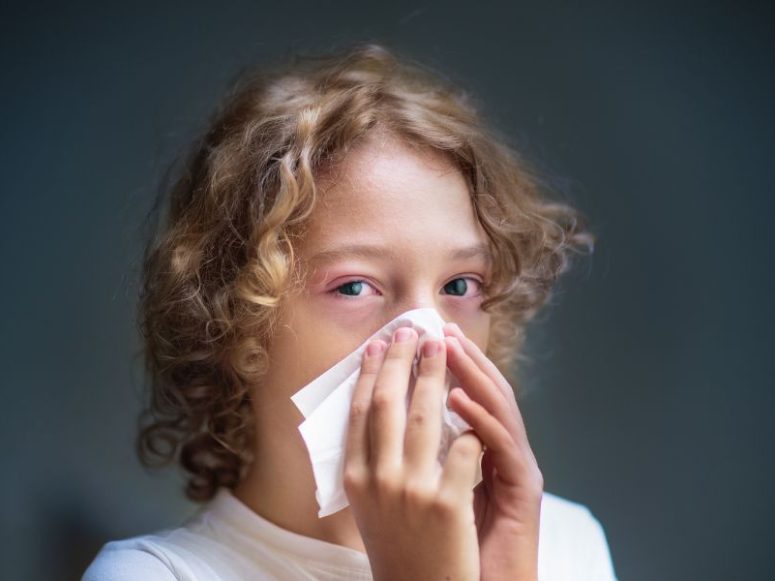As a parent, it can be challenging to know when your child's illness requires immediate medical attention and when it's safe to monitor symptoms at home. Children are naturally more susceptible to infections due to their developing immune systems and frequent exposure to germs in schools and daycare settings. Understanding the most common childhood infections and their warning signs can help you make informed decisions about your child's health care.
Key Takeaways
- Most childhood infections are viral and will resolve on their own with supportive care, but some require medical attention.
- Knowing the warning signs of serious infections can help you determine when to seek immediate medical care for your child.
- Preventive measures like proper hygiene, vaccinations, and a healthy lifestyle can significantly reduce your child's risk of infections.
1. Understanding Common Viral Infections
Viral infections are the most frequent cause of illness in children. While they can be uncomfortable, most viral infections resolve without specific treatment.
| Infection Type | Common Symptoms | Typical Duration |
| Common Cold | Runny nose, congestion, mild cough, sneezing, low-grade fever | 7-10 days |
| Influenza (Flu) | High fever, body aches, fatigue, cough, headache | 5-7 days |
| Gastroenteritis (Stomach Bug) | Vomiting, diarrhea, stomach cramps, mild fever | 1-3 days |
| Hand, Foot, and Mouth Disease | Fever, mouth sores, rash on hands and feet | 7-10 days |
When to Treat at Home: Most viral infections can be managed with rest, fluids, and comfort measures. Encourage your child to drink plenty of fluids, get adequate rest, and use age-appropriate fever reducers if needed. Remember that antibiotics are not effective against viral infections. 1
2. Recognizing Bacterial Infections That Need Treatment
Unlike viral infections, bacterial infections often require antibiotic treatment prescribed by a healthcare provider.
Common Bacterial Infections in Children:
- Strep Throat: Sudden onset of severe sore throat, fever, swollen lymph nodes, and sometimes a rash.
- Ear Infections (Otitis Media): Ear pain, fever, irritability, and sometimes drainage from the ear.
- Urinary Tract Infections (UTIs): Frequent urination, pain during urination, fever, and sometimes abdominal pain.
- Pneumonia: High fever, difficulty breathing, chest pain, and persistent cough with phlegm.
According to the CDC, it's important to complete the full course of antibiotics even if your child feels better, to ensure the infection is completely cleared and to prevent antibiotic resistance. 2
3. Red Flag Symptoms: When to Seek Immediate Medical Care
Certain symptoms indicate that your child needs immediate medical attention, regardless of the suspected cause of illness.
Seek Emergency Care If Your Child Has:
- Difficulty breathing or rapid breathing
- High fever (over 104°F/40°C) or fever in infants under 3 months
- Signs of dehydration: No wet diapers for 6+ hours, dry mouth, no tears when crying, lethargy
- Severe headache with neck stiffness
- Persistent vomiting that prevents keeping fluids down
- Unusual drowsiness or difficulty waking up
- Severe abdominal pain
- Rash with fever, especially if it doesn't fade when pressed
4. Age-Specific Considerations
The approach to childhood infections varies significantly based on your child's age, as younger children are at higher risk for complications.
| Age Group | Special Considerations |
| Infants (0-3 months) | Any fever requires immediate medical evaluation. Their immune systems are immature, and serious infections can develop rapidly. [1] |
| Toddlers (1-3 years) | Watch for signs of dehydration during illnesses involving vomiting or diarrhea. They may not be able to communicate their symptoms clearly. |
| School-age children (4-12 years) | More able to describe symptoms. Focus on preventing spread to classmates and maintaining good hygiene practices. |
| Adolescents (13+ years) | Similar to adults in their ability to fight infections, but still need monitoring for complications. |
5. Prevention Strategies for Common Infections
Prevention remains the best strategy for protecting your child from infections. Simple measures can significantly reduce the risk of illness.
- Maintain Good Hygiene: Teach your child to wash hands frequently with soap and water for at least 20 seconds, especially before eating and after using the bathroom.
- Stay Up-to-Date on Vaccinations: Follow the recommended immunization schedule to protect against serious infections like measles, whooping cough, and pneumonia.
- Promote Healthy Habits: Ensure your child gets adequate sleep, eats a balanced diet, and stays physically active to support their immune system.
- Avoid Sharing Personal Items: Teach children not to share cups, utensils, or personal items that could spread germs.
- Keep Sick Children Home: This helps prevent the spread of infections to other children and allows your child to recover more quickly.
When in doubt about your child's symptoms, don't hesitate to contact the pediatric team at SOM Medical Practice. We're here to provide guidance and care when your child needs it most. Our experienced providers can help you determine the best course of action and provide peace of mind during your child's illness.
References
[1] Johns Hopkins Medicine. (n.d.). Common Childhood Illnesses.
[2] Centers for Disease Control and Prevention. (n.d.). Diseases and Conditions.








